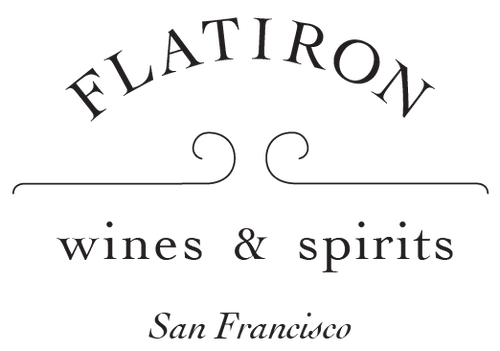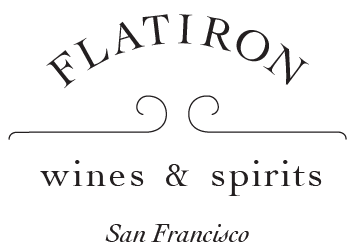
Vinho Verde's Natural Side
The Bojo do Luar project came to life during importer Savio Soares's trip to Portugal's Vinho Verde region.
Interested in finding a local producer that worked in the more natural style he prefers, Savio met up with Fernando Paiva.
Fernando is a biodynamic producer who has set the benchmark for non-interventionist winemaking throughout Portugal. Fernando already had representation but he knew of someone that might just fit the bill: Antonio Sousa.
At the time, Antonio was a practicing biodynamic grower but produced wine in a rather conventional way.
After all, Vinho Verde has been pigeonholed into a land of lightly carbonated off-dry wines that are like Sprite for adults. The pressure is high to make wines like that since they are relatively quick to produce and, despite the low price, thirsty Americans and tourists will buy it all up.
Despite Antonio’s lack of interventionist winemaking experience, Savio was undeterred and saw this as an opportunity. With some guidance from Fernando, they chose to work with the traditional varieties of Northern Portugal.
Savio’s knowledge and experience from many decades working with French producers matched with Antonio’s winemaking prowess and openness to experimentation, and Bojo do Luar was forged.
Vinho Verde is a beautiful region and as the names suggest, rather verdant with rolling hills and scenic river valleys.
The region has a mostly cool temperate climate throughout Spring, then very warm days, and cool nights until the harvest in September.
The parcels that Bojo works with are located near the Tâmega river, with deep granitic soils and south-south-western exposure, not too far from where it empties into the Douro River.
They choose to work with five red grape varieties and three whites all chosen for their natural high levels of tartaric acids and low PH which translates into bright and fresh wines. Since these varieties have been grown in the region for centuries they tend to be more resistant to pests and maladies, hence a perfect choice for biodynamic agriculture.
Cellar practices are clearly informed by Fernando Pavia’s mentoring. He has long experimented with using chestnut flour as a natural preservative and since which he credits for the elimination of sulfur additions in his wines. Bojo Luar uses this same technique.
Each grape varietal was vinified separately in stainless steel and concrete. One kilogram of ground chestnut leaves was added per each ton of grapes before fermentation as natural stabilizer. In conventional winemaking this would be the first of many sulphur additions.
There was minimal intervention throughout the entire process in the cellar. They use a variety of vessels from stainless steel to clay amphorae. After blending a measly 10 grams of SO2 per liter were added.
The wines, simply put, are an absolute joy to drink. Each displays a unique expression of Vinho Verde but has that ebullient quality that has made this area and its wine famous.
But unlike those common, carbonated concoctions these are real wines with clear and present terroir.
Add to that the Portuguese tendency to produce stellar wines at a fraction of the price. White, pink or red they are filled with electric energy and bright, clear flavors: qualities that many of our favorite natural wines tend to share.
Most importantly, Bojo do Luar, along with a handful of other like minded malcontents are helping to redefine Vinho Verde.
All are helping to reclaim lost tradition and styles as well as abandoned sites and varieties. They are planting new vineyards of these old varieties and farming them with sustainable practices that enhance the natural beauty and biodiversity of this lush part of the world.
Unpretentious and deeply satisfying, these fresh, crisp and delicious bottles from Bojo do Luar are leading the way forward.
Bojo do Luar, Vinho Branco “Doralice”, 2020
Loureiro is the workhorse of Vinho Verde but I can guarantee you've never had one quite like this. Bojo’s version spends eight weeks on its skin, with 10% whole clusters. This has Loureiro’s melony side but a bit more rich and golden. The palate is filled with juicy lemony acidity and a slight granitic minerality. So fresh, so clean, with just the slightest tannin keeping everything structured. A touch of salinity makes this what you reach for when seafood goes on the grill.
Bojo do Luar, Vinho Rosé “Luar Rosa”, 2020
This ridiculously delightful new rosé is made of 60% Tinta Caõ and 30% Vinhão (both red grapes), as well as 10% Loureiro. The reds get a super short maceration and the Loureiro gets thrown in there to add vibrancy. Well, that seems to be the secret sauce. Incredibly aromatic and zesty, this unfurls generous aromas of cherry blossom, gardenia, and tropical fruit and flowers, while the palate offers tart, zippy flavors of Rainier cherry, berries, and hibiscus. This is an exceptional example of the pink stuff.
Bojo do Luar, Vinho Verde “Deu Bode”, 2020
'Deu Bode' is a field blend of 70% red and 30% white grapes, all native varieties including Vinhao, Bastardo (Trousseau), Borracal, Arinto, and Loureiro. All were chosen for their naturally high acidity and macerated for only 5 days in order to retain that fresh quality. Dark in color yet very light on its feet this rides the line between red and rose. A generously perfumed nose of candied dark fruit, sweet berry, and spice leads into a palate that takes a sharp turn into bright, juicy, and mouthwatering. Tart wild raspberry, fresh-picked blackberry, and cherry meld with electrifying acidity on a light-bodied frame with just a hint of tannin and a whisper of violets on the finish. Very versatile with food, this is life-affirming with some Moroccan lamb kabobs.

